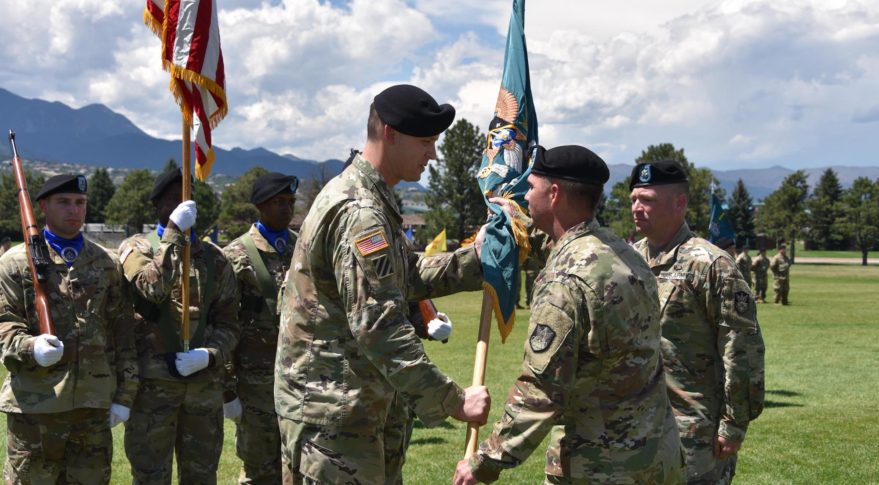US Army Troops Could Be Headed to the Space Force

WASHINGTON — If and when a new military branch for space gets off the ground, its ranks would be dominated by airmen. But Army soldiers also would have a role by virtue of much they rely on military satellites in peacetime or in war.
More than 70 percent of the Army's major weapons and equipment need satellites to function. About 2,220 active-duty soldiers, reservists and civilians make up the "space forces" under the U.S. Army Space and Missile Defense Command/Army Forces Strategic Command headquartered at Redstone Arsenal, Alabama.
"We are the biggest users of space," said Brig. Gen. Tim Lawson, deputy commanding general for operations at the Army Space and Missile Defense Command. [Watch Trump Order the Space Force]
The Army has not publicly weighed in on whether any of its units should be part of the Space Force. Lawson said it's only been two weeks since President Trump ordered the Pentagon to create a Space Force so it's too soon to tell. "We'll see where it takes us," he said on Wednesday at the 2018 MilSatCom USA conference in Arlington, Virginia.
"Do we want to be part of the Space Force? That is yet to be determined," Lawson said. "I think there's a lot more to come, and the Army is part of this planning process."
Army Forces Strategic Command reports to U.S. Strategic Command, led by Gen. John Hyten. Lawson said both Hyten and Air Force Space Command's Gen. John Raymond are "two of the smartest space guys." If the Space Force moves forward, "these are the two guys that are going to get us there and are going to get us there right."
Army space forces are responsible for five key missions – intelligence, surveillance and reconnaissance; missile warning; environmental monitoring; satellite communications; and positioning, navigation and timing, or PNT.
Get the Space.com Newsletter
Breaking space news, the latest updates on rocket launches, skywatching events and more!
Troops are hugely dependent on space systems. Each Army brigade requires at least 2,500 PNT devices and 250 satellite communications terminals.
The 53rd Signal Battalion of the Army 1st Space Brigade manages a portion of the Wideband Global Satcom network of satellites the military relies upon for routine communications, broadcasting and data sharing.
The Army also deploys its own satellites. One of its constellations of small satellites is called SNAP, short for Army Space and Missile Defense Command/Army Forces Strategic Command's nanosatellite program. These tiny spacecraft — the size of a loaf of bread — provide beyond line-of-sight communications using existing UHF tactical radios.
Last year the Army's Kestrel Eye remote sensing satellite was launched from the International Space Station. About the size of a small refrigerator, Kestrel Eye takes high-resolution pictures for Army commanders on the ground. SNAP satellites cost about $500,000 each, and Ketrel Eye is about $2 million, which Lawson said is a relatively small price tag for systems that provide valuable services.
This story was provided by SpaceNews, dedicated to covering all aspects of the space industry.
Join our Space Forums to keep talking space on the latest missions, night sky and more! And if you have a news tip, correction or comment, let us know at: community@space.com.

Sandra Erwin covers the military and national security beat as a Senior Staff Writer at SpaceNews. Sandra, based in Arlington, Virginia, specializes in Defense Department and Intelligence Community space programs, policy, budgets, technology and the industry that supports this sector. She joined SpaceNews in October 2017. Before coming to SpaceNews, Erwin covered the U.S. military, the Pentagon, Congress and the defense industry for over two decades as editor of the National Defense Industrial Association's National Defense Magazine and Pentagon correspondent for Real Clear Defense.










